
How to run a competitive analysis (and win the race)

Competitive analysis is the process of evaluating the competitive landscape within your target market. The end goal is to glean insights from this competitive research so that you can effectively carve out your own market share.
To do this, you’ll need to look at your competitors’ messaging and positioning, sales and marketing strategies, audience engagement tactics, price points, and overall customer experience to identify gaps in the market that you can fill.
For newcomers especially, it can be difficult to differentiate your brand against established players in the space. That’s why in this guide, we’re going to walk you through exactly how to run a competitive analysis so that you can achieve a competitive advantage and stand out from the crowd.
Note: While conducting your competitive intelligence gathering, it’s important to record as many insights and data points as possible. We’ve created a Competitor Analysis Matrix to make this process easier for you. You’ll notice that we’ve prepopulated fictional examples to help you shape your own analysis. As we’ll be referring back to this matrix throughout the guide, we recommend downloading and opening it up now.

Table of contents
- Step 1: Identify & segment your competitors
- Step 2: Analyse their market positioning
- Step 3: Review their content & social media
- Step 4: Check out what their customers are saying
- Step 5: Walk through their customer journey
- Finding opportunities for your positioning and filling gaps
- Wrapping up
Step 1: Identify & segment your competitors
When most entrepreneurs think of “competition”, they often assume this means “people selling the same thing to the same audience”. However, market competition is more dynamic than this.
Which is why it’s important to segment competitors into different categories. Let’s run through what each of these are:
- Direct competitors. These are the brands selling similar product offerings or services as yours to the same market.
- Indirect competitors. You unlikely to sell the same products or services, but you are competing for the same audience with similar resources. For example, a coffee shop vs. a juice bar.
- Potential competition. A brand that doesn’t yet serve your market with a competing product, but has the resources, infrastructure or growth potential to do so in the future.
- Competitors solving the same problem. These competitors might not sell the exact same thing as you, but they do solve the same problem in a different way. For example, a SaaS product that allows ecommerce brands to get set up vs. an agency that does it for them.
- Competitors of attention. Marketing is getting harder, and we’re all vying for the attention of our target audience. Even if a completely irrelevant brand is advertising on the same platform as you, you’re still competing against them to get your customer’s attention.
Depending on the stage of your business strategy and growth, you may wish to analyse several or all of these. For startups and small businesses, we recommend focusing on direct competitors and those competing for your customer’s attention. You’ll be competing against these brands most often, especially as you execute on your digital marketing strategy.
It’s likely you already know who your biggest direct competitors are. If you’re still sussing out the competitive landscape though, here are a few ways to identify them:
- Ask your current customers who they’ve purchased from in the past (and why)
- Search on Google for keywords like “best [your product]”
- Look to social media and search for relevant hashtags
For example, a project management software startup could search for relevant hashtags on Instagram to identify competitors who create content on the platform:
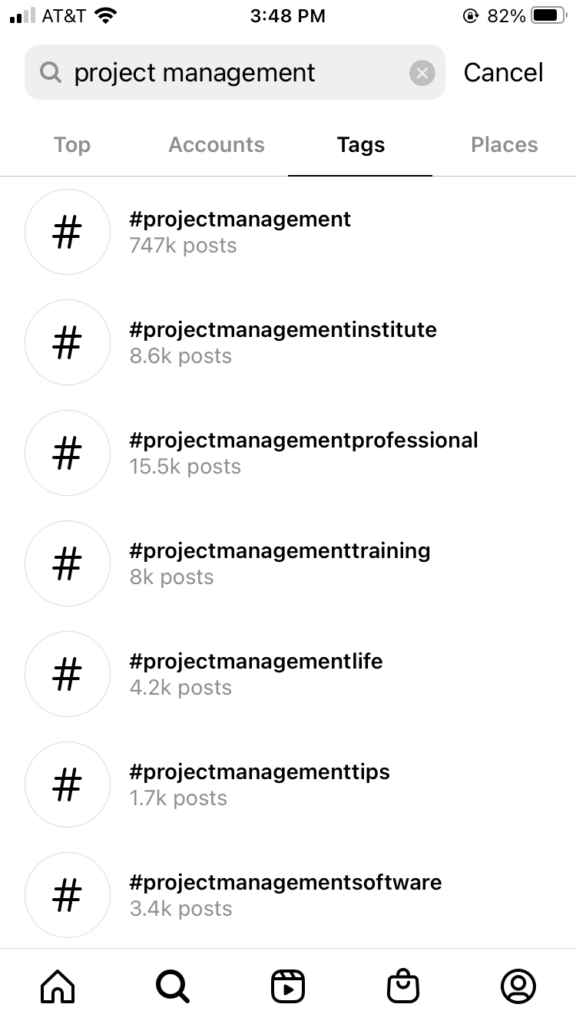
If you click into the #projectmanagementsoftware hashtag, you’ll see tons of posts from direct competitors (and the affiliates, influencers and promoters associated with them) ranging in popularity.
To find your content competitors, seek out their marketing efforts through the following methods:
- Search for relevant keywords on Google (for example, “project management software companies”)
- Again, search for relevant hashtags on social media to find indirect competitors creating content
- Use a social insights tool like Mention or BuzzSumo
For example, when searching for “project management software tools” on Google, an entire list of the most popular tools are populated at the top of the page:

While you may not be selling the same product/service as the most high-ticket brands, you’ll still be competing against them when creating similar content for your customers.
Start by identifying your top 10 direct competitors (or as many as you can find) and plug their URLs into your Competitor Analysis Matrix. You can delete our fictional examples because we’ll be showing you screenshots of them throughout the guide as a comparison.
For example, here are the top three competitors we’ve uncovered for a fictional design firm that focuses on brand identity:
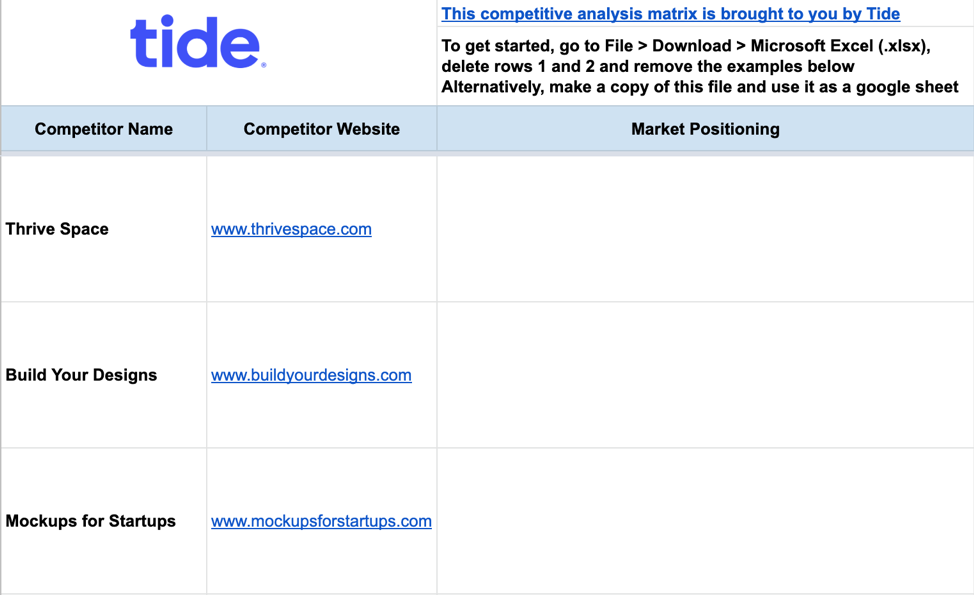
Try to include a mix of your competitor segments so that you are keeping an eye on all types of businesses in your field.
Step 2: Analyse their market positioning
The messaging on a brand’s website can tell you a lot about where they stand in the market. By analysing web copy, value propositions and unique selling points (USPs), you can quickly figure out who their core market is and what gap they fill in the space.
Start by heading to their website and browsing their homepage. Most homepages are built to focus on the main value proposition, and is therefore a great place to start.
For example, this is the homepage from Harry’s:
Above the fold

Below the fold

From the headline alone, we can take away the following insights:
- They clearly position themselves as a high-quality grooming product available at an affordable price (i.e. “without any gimmicky extras” and “Honestly Priced”).
- They differentiate themselves by highlighting their product quality standards as well as their giving back initiatives (i.e. “we donate 1% of our sales to nonprofits that provide mental health care services to men in need”).
- Their product design, web design and logo typography point toward a sophisticated and modern brand.
When evaluating the positioning of your competitors, look for the following:
- Their headline. This is usually where companies condense their value proposition into a single sentence. It’s the distillation of their positioning in the market and explains how they solve their customer’s problems.
- Benefit statements. Look for features and benefits they offer. Here’s an example from Xero:
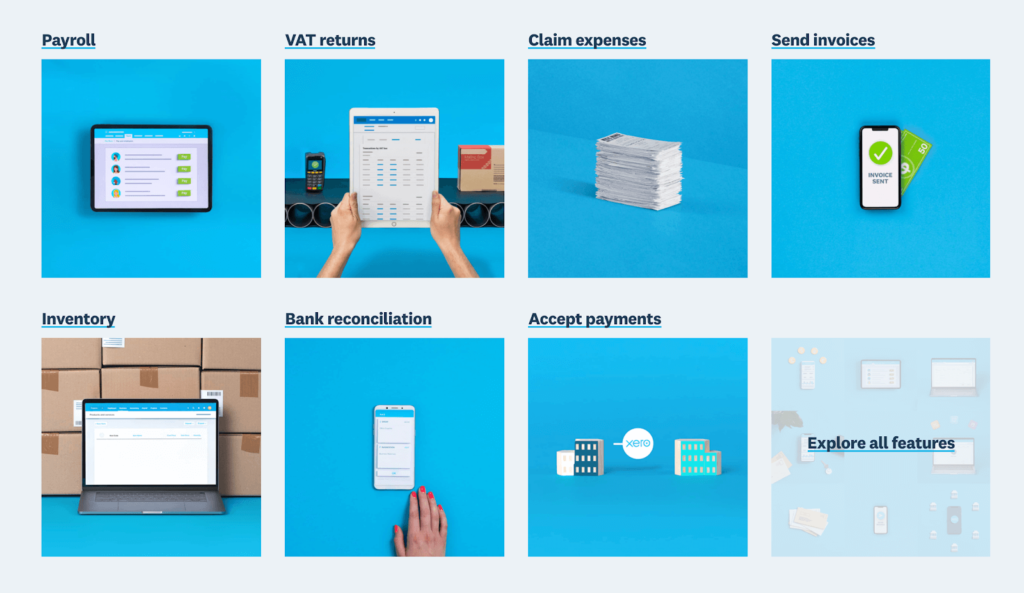
As you can see, they focus on the specific pain points of their ideal customer, tying those to different features around their product (i.e. an easier way to pay your employees via HMRC-recognised software).
- Product descriptions. If they sell a range of products, check out the descriptions to see how they position each individually. Here’s an example from coffee brand Four Sigmatic:
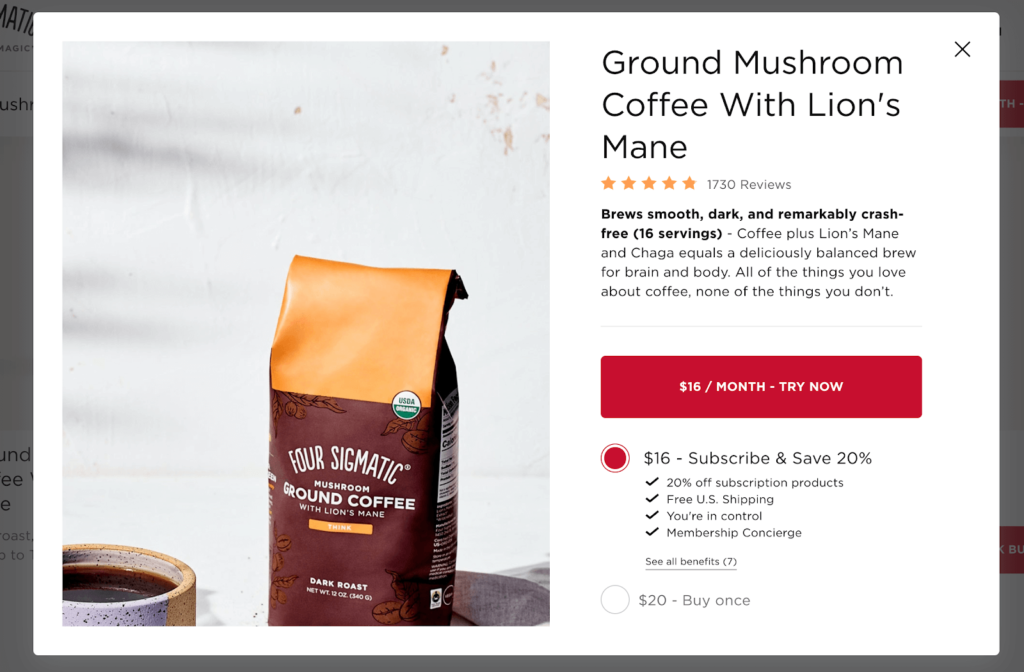
As you can see, they don’t just sell ordinary coffee. Their mushroom-infused blends are designed to help with productivity and creativity (i.e. “for brain and body”) to give you a great feeling without any negative side effects. This is what makes this specific product different.
As you collect these insights, add them to your matrix. Here’s an example from our fictional brand design agencies:
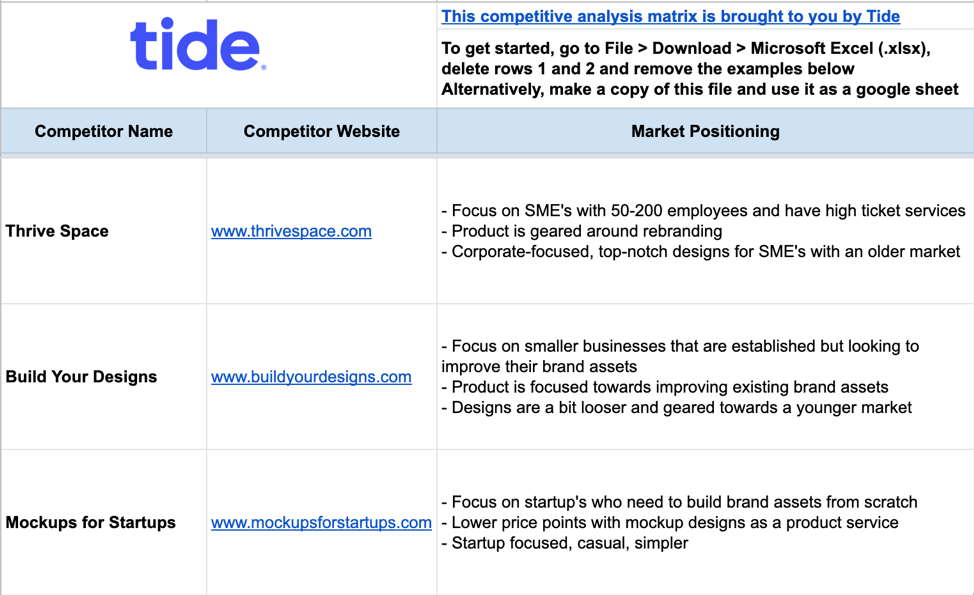
Step 3: Review their content & social media
With a better understanding of your competitive landscape, it’s time to look at how they serve and engage their audience in other ways.
Start with their owned content and work your way from there. Owned content includes blog posts, ebooks, whitepapers, email newsletters, videos, webinars and anything else that you can find on their website.
For example, SaaS brand Drift creates blog content around the topic of B2B growth and “conversational marketing”, a term they coined themselves:
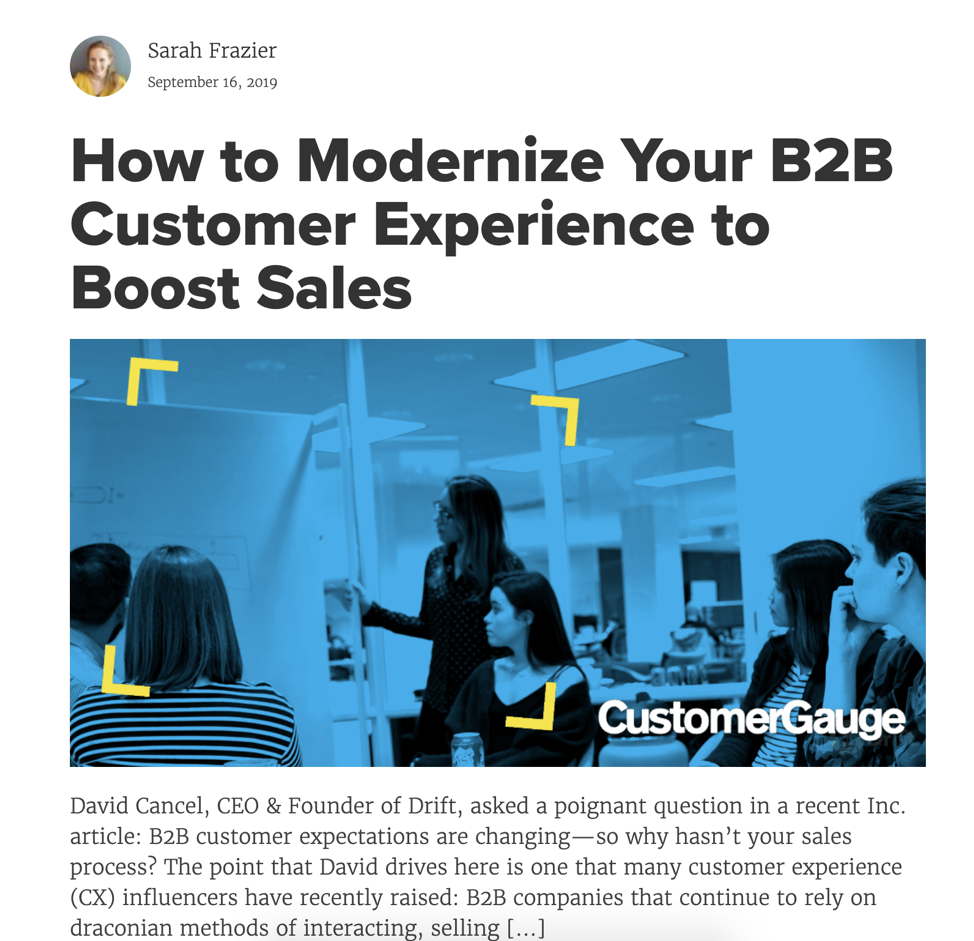
The format of these articles are all how-to, teaching their audience of B2B marketers how to solve problems in actionable and practical ways. They also host regular webinars, and the founders have even authored a series of books:
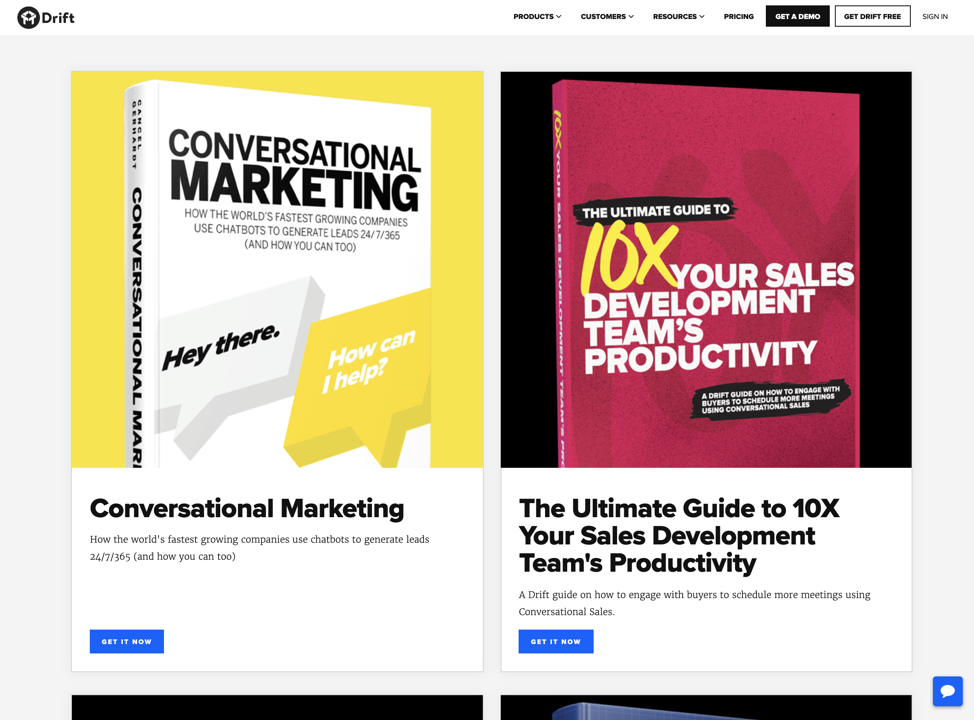
In general, take a look at what your competitors publish. While doing so, look closely at the following:
- Formats. Identify the content formats they publish. As mentioned above, this might include blog posts, how-to guides, ebooks, webinars, email courses, newsletters, testimonials, case studies, podcasts and videos.
- Themes. Which topics do they tend to focus on? For example, a B2B marketing brand like Drift might focus on content marketing and lead generation. A brand like our fictional design agency could create content around the best practices for rebranding a website, for example.
- Conversions. How do they acquire leads and customers from their content? For example, offering to download an ebook after they’ve read a blog post.
After you’ve checked out their owned content, take a peek at their social presence. You’ll usually find direct links to their social profiles in the header or footer of their website.
There are two key factors to look out for when analysing your competitor’s social media presence:
- The content they create
- How they engage with their customers
For example, here’s the Instagram page from London-based coffee shop Department of Coffee and Social Affairs:
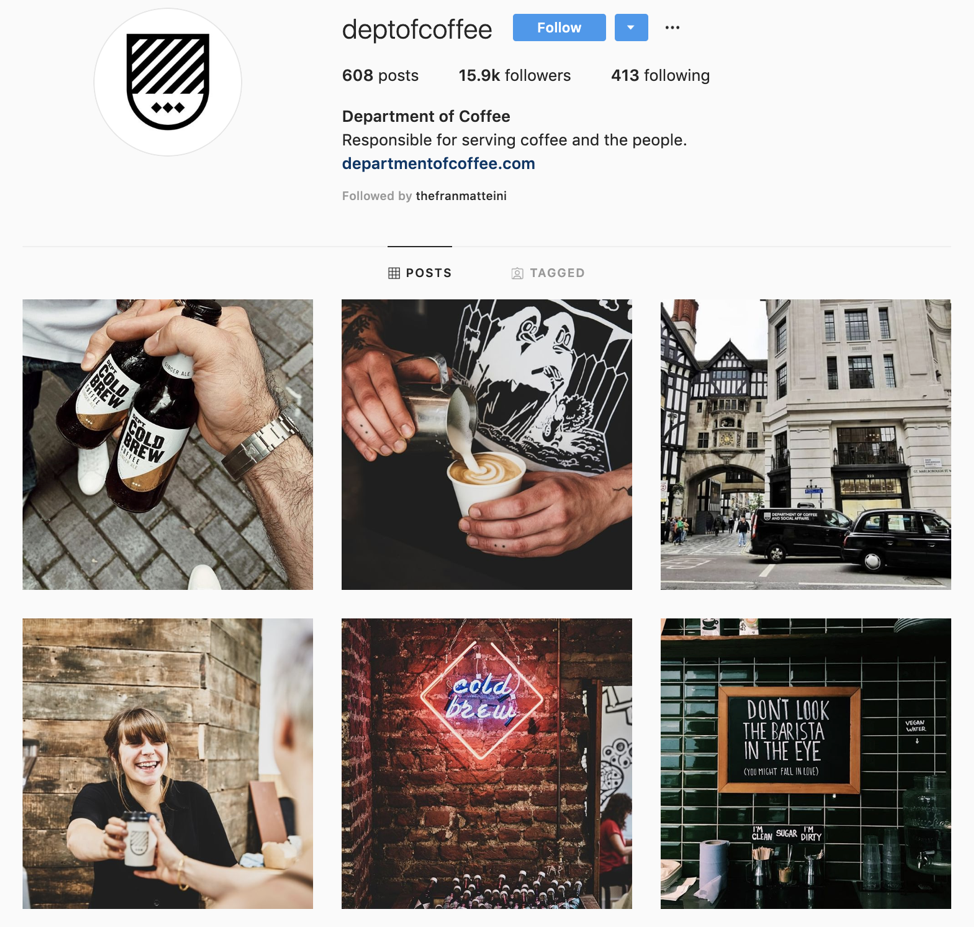
They post high-quality photography around coffee, their coffee shops, products and London as a destination. Looking deeper into one of these posts, we can check out the copy they use:
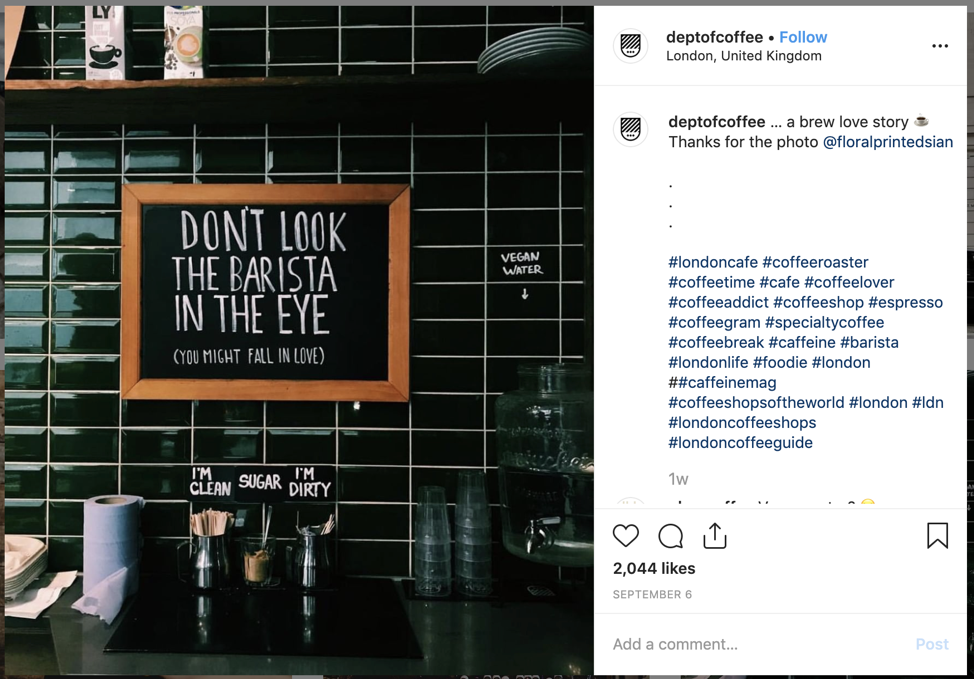
With over 2,000 likes, this post has generated a lot of attention – all with a simple caption and a series of hashtags. Looking at the comments, we can then see how they engage with their audience of followers:

These are the things you should look out for when analysing your competitor’s social media presence. Do this across all of their social profiles. As a general rule of thumb, identify which of their content gets the most engagement on each platform. Here are some more specific things to keep an eye on for regarding social media presence:
- Facebook. Do they create video content or focus on text? How do they respond to comments?
- Instagram. Do they post photography of products, people, or environments? Perhaps they post motivational quotes? What kind of content do they post to their Stories? Do they utilise Reels and IGTV?
- Twitter. Do they use Twitter to share content, or do they create native content in the form of threads? How do they engage with other thought leaders and customers across the platform?
- LinkedIn. Does their company have a presence? Do the founders and marketers create content to build their personal brands? Do they create articles, posts or video content?
Top Tip: Navigating the social media landscape can feel like a labyrinth if you’re not used to it. But because it has such a huge impact on customer engagement and retention, it’s key that you learn how to use these platforms and channels to your advantage. To see how to do just that, read our 7-step guide to creating a social media marketing strategy for your small business 📱
Going back to our fictional examples, here’s what this analysis might look like:
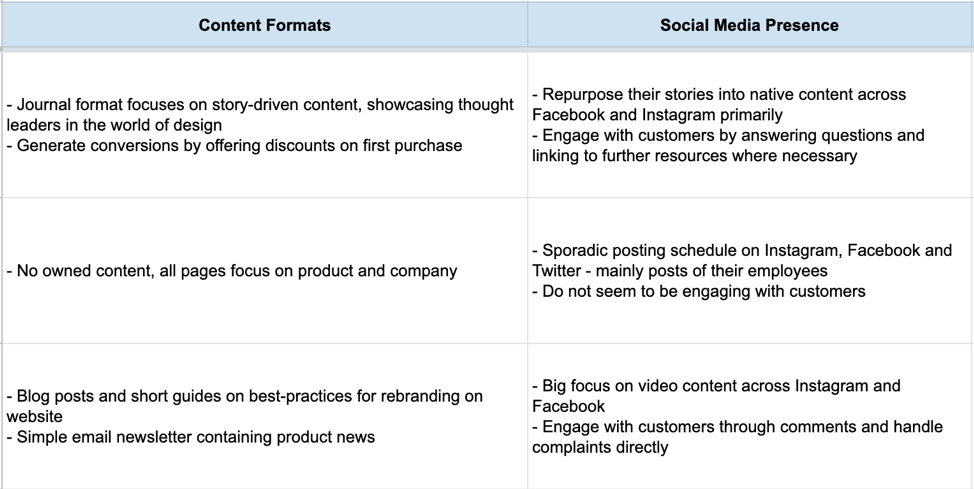
Include as much insight as you can about their marketing and creative business strategy. This will help you identify your competitors’ strengths and weaknesses, which is a great starting point as you begin to think about creating your own content as part of your growth efforts.
Step 4: Check out what their customers are saying
You’ve got a good idea of what your competitor’s are saying about themselves. But what about what their customers are saying about them?
Impartial customer feedback will give you true insights into how your competitors are being perceived in the market. Which means you should look for both positive and negative feedback.
To find the voices, praise and feedback of their customers, look to the following sources:
- Testimonials. Check out your competitor’s website and landing pages for any testimonials they’ve included:
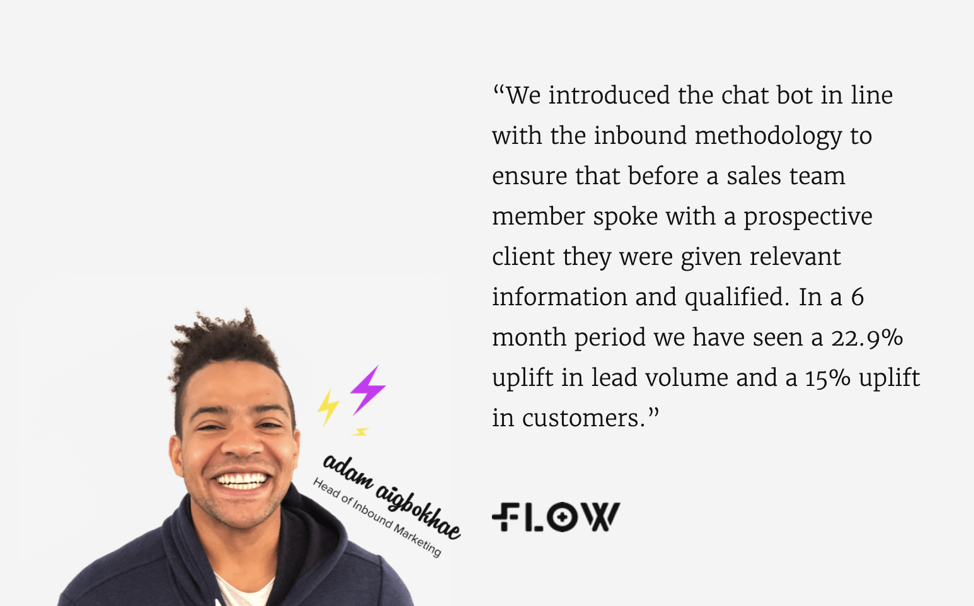
- Facebook rating. Check out their company’s Facebook page to see if people are actively leaving reviews:
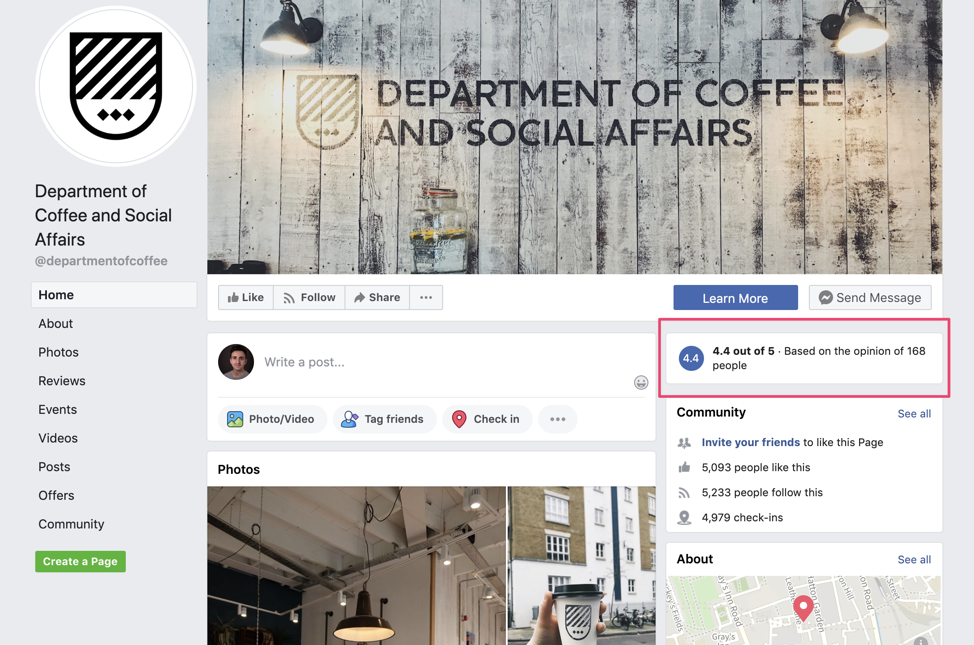
Scroll down to explore their reviews in more detail:
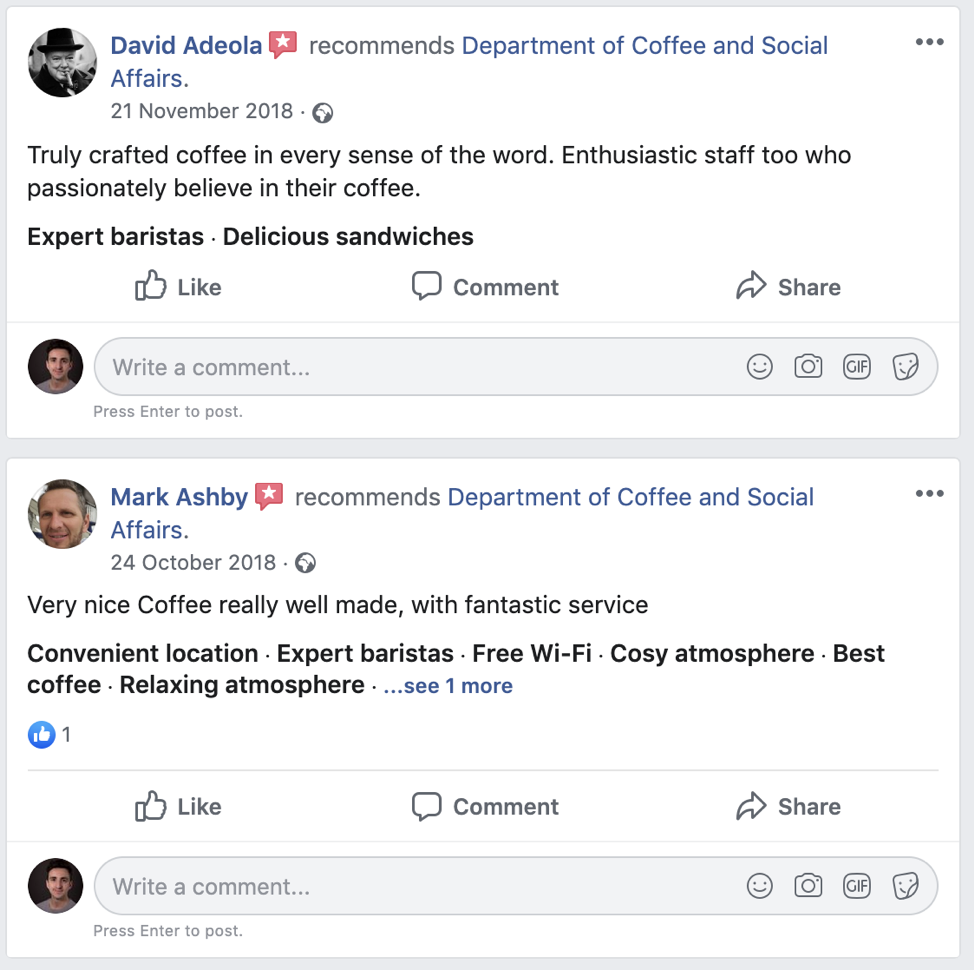
This will give you both qualitative insights through the language they use, along with features, services, amenities, and so on that each customer valued (or disliked) the most (e.g. free wifi, convenience, relaxing atmosphere, price of products, etc.)
- TripAdvisor. If you’re operating in the hospitality or restaurant industry, TripAdvisor is a great source of customer feedback from customers who have experienced what a competitor has to offer:
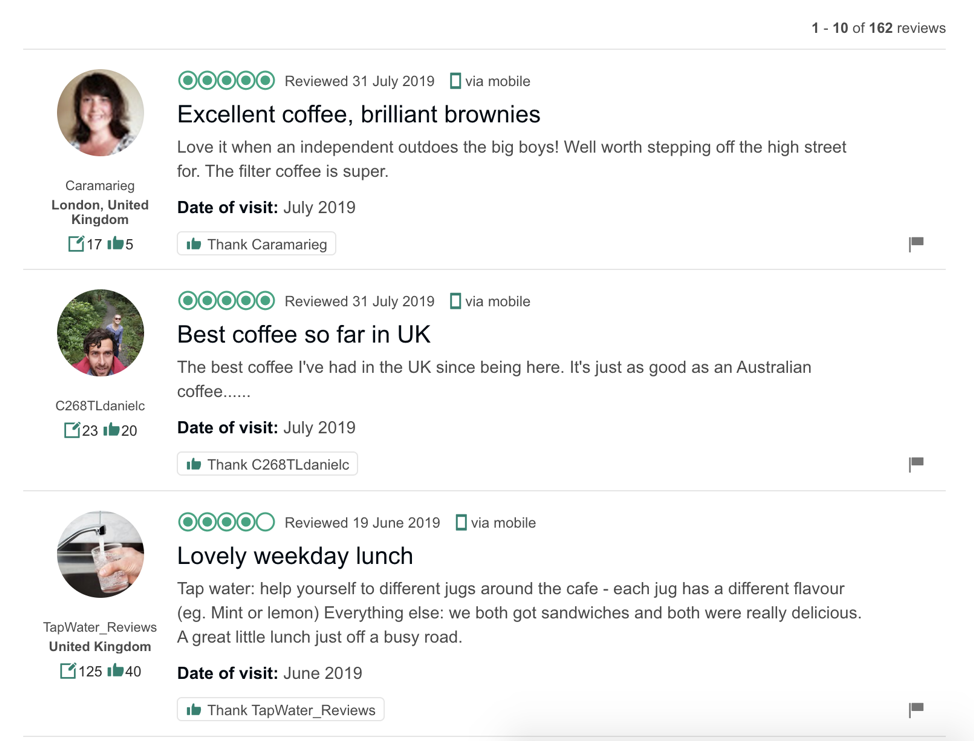
- Trustpilot. Used by many brands in the tech and e-commerce space, Trustpilot is a great source for reviews:
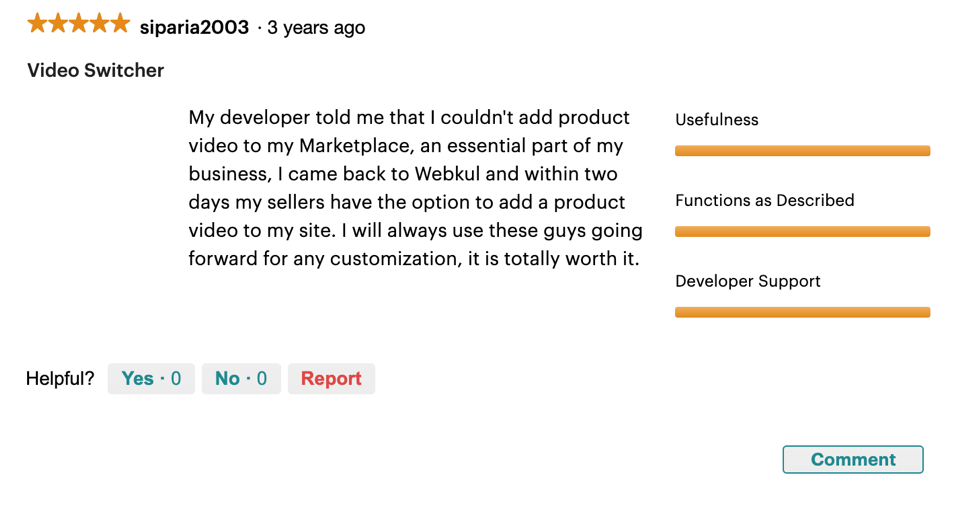
The examples above give you an idea of what customers love about your competitors, which is important when collecting an objective view on how they’re perceived in the market.
However, you should also keep a keen eye out for negative reviews. For example, here’s one from Trustpilot (from a brand we’ve anonymised):
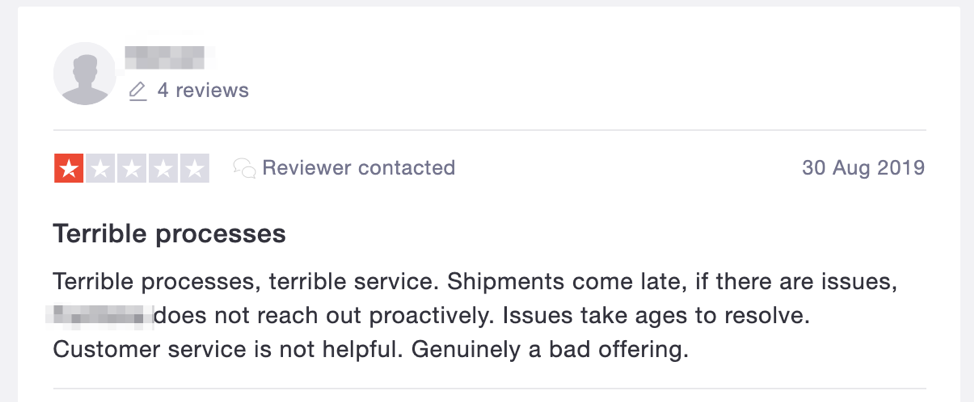
There are several opportunities we can take from this:
- Work harder to provide a stellar customer service
- Ensure the delivery process is fast
- Make customer issues effortless to resolve
These are simple things you can do to create a delightful customer experience. And if your competitors are failing to deliver on these experiences, it’s an easy way to stand out.
Here’s how you might record customer sentiment in your competitor analysis matrix:
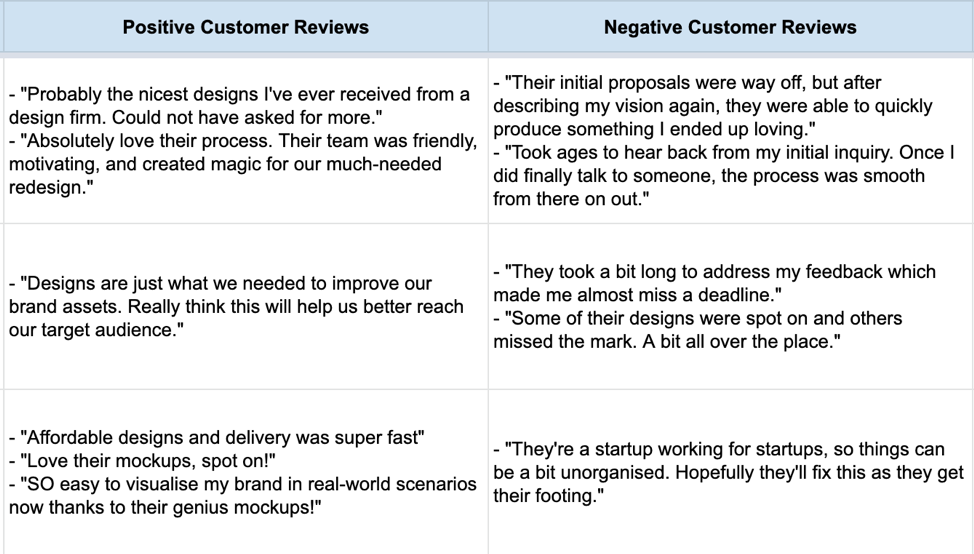
Step 5: Walk through their customer journey
There’s no better way to suss out your competition than to become a customer yourself. Going through the customer journey and sales process is one of the best ways to get rich insights you wouldn’t usually find above the surface.
Depending on your business model, each touchpoint will vary. Here are a few examples:
- Ecommerce. Go through the checkout process, collect post-purchase content and evaluate the product and packaging.
- SaaS. Request a demo, respond to questions via email and get taken through the software by a sales rep.
- Mobile app. Download the app, go through the onboarding process and start getting into the features.
- Service or agency. Sign up for a consultation, go through the discovery process and check out the proposal.
Collect and analyse as much as you can. This means recording sales calls and taking screenshots of emails in order to collect as much competitor material as possible.
When going through the customer journey, look out for and take notes on the following aspects of their business strategy:
- Ease of purchase. How easy is it to buy from them? What is the checkout process like?
- Remarketing and cart abandonment. What happens when you begin the customer journey and fail to complete it? How do they entice you to come back?
- Welcome and confirmation emails. What messaging do you receive when you become a customer? How do they begin the customer relationship?
- In-product onboarding. How do they guide you through their own products? If it’s a SaaS product or an app, which features do they guide you to when you first begin using the product?
- Packaging. What qualities do the boxes, paper, or wrapping have? Are they well designed, simple, elegant? Do they use personalised messaging?
- Discovery. If the relationship begins with a sales process, what questions do they ask to learn more about your business? How easy is it to schedule an appointment?
- Sales calls. What questions do they ask on the call itself? What’s the format and framework of the conversation?
- Proposals. How do they position the solution to your problem? How is the information laid out, and what social proof points do they use?
- Negotiation and objection handling. Use common objections you often come across yourself and see how they handle them. This is the perfect opportunity to name-drop your own brand and see how they position themselves against you! 😉
Let’s take a look at some examples of the above, starting with this abandoned cart email from thredUP:
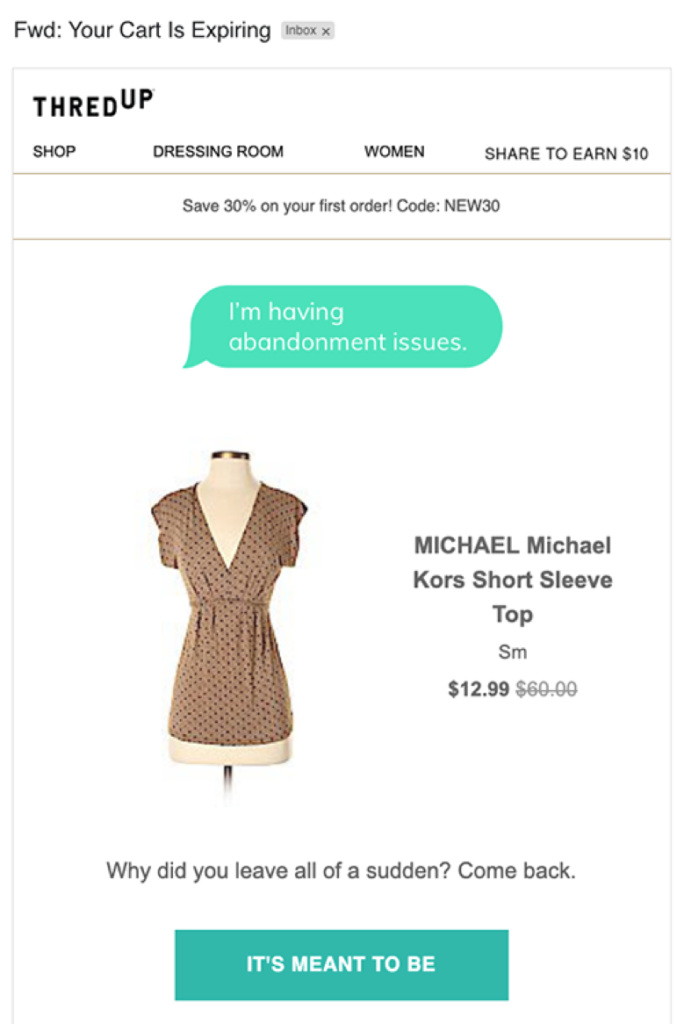
One thing to note is the contrast of simple design against fun copy. It’s clear they use the language of their buyers to entice them back.
Then, there’s this onboarding email from project management platform Asana:
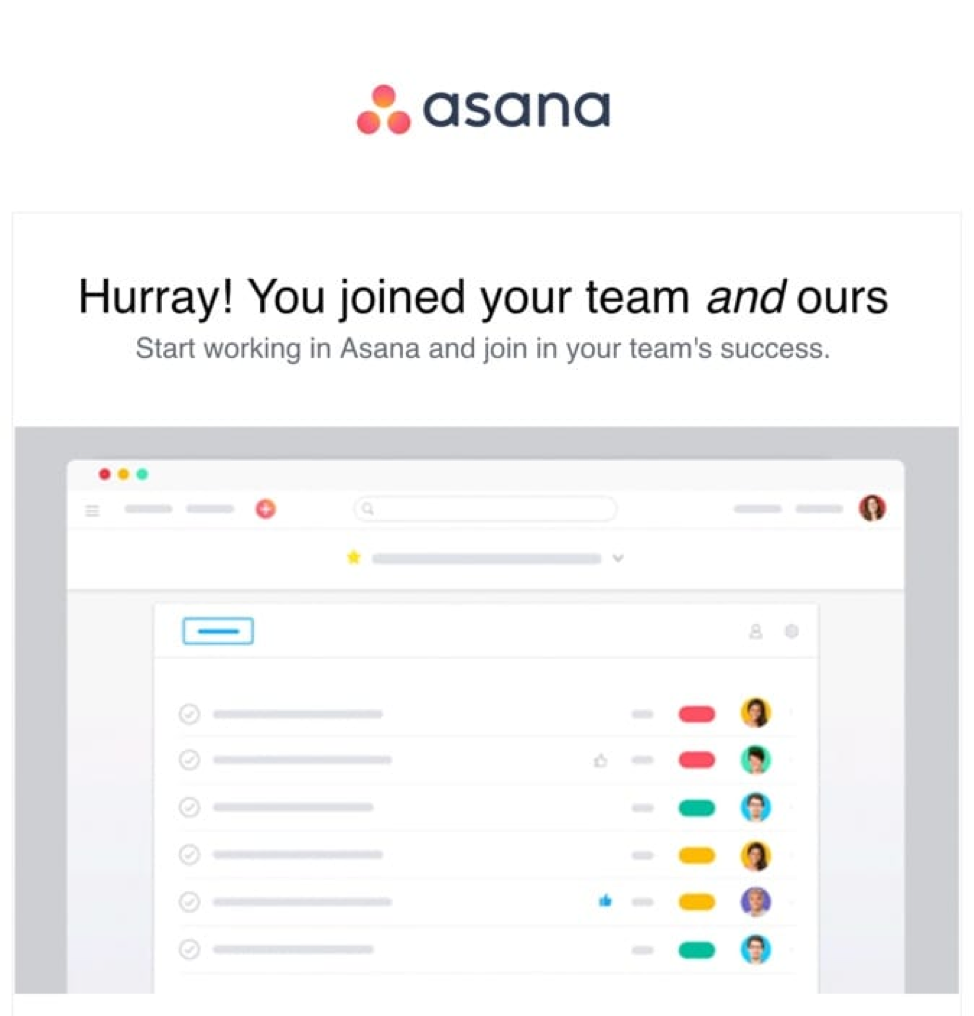
They begin with simple welcome messaging before moving on to feature benefits, encouraging a new user to get started and explaining how they’ll improve their management workflows:
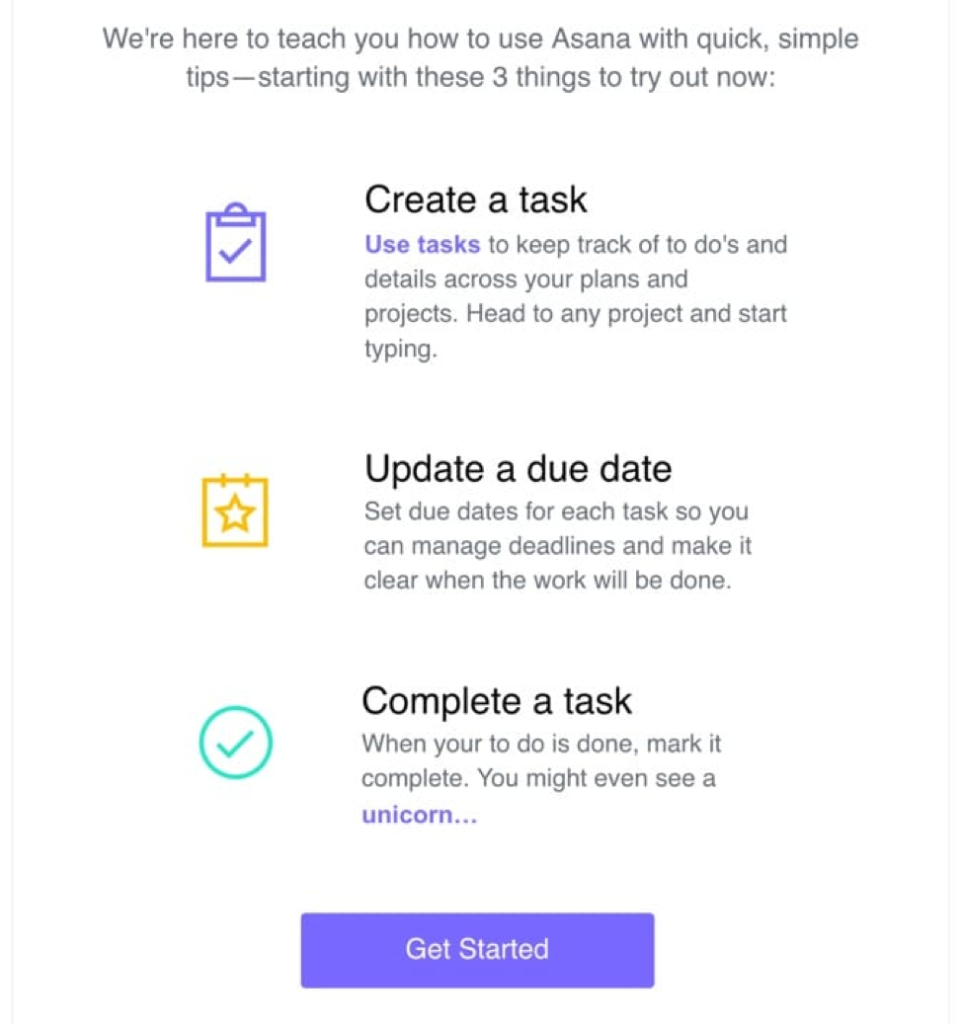
This is then wrapped up with a simple call-to-action to get them into the app itself.
Once you’ve completed the customer journey, record your findings in the competitor analysis matrix:
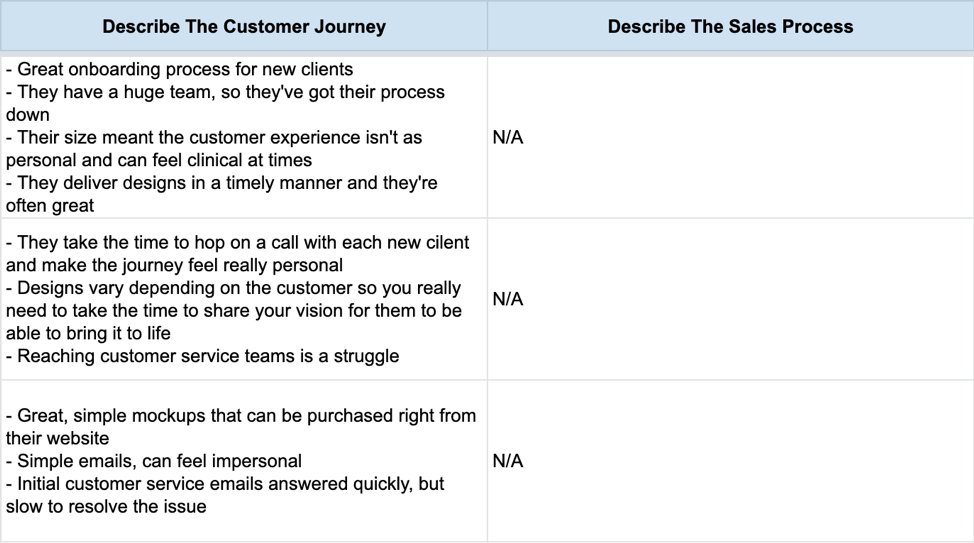
Finding opportunities for your positioning and filling gaps
Now you’ve gone through the customer analysis process, you may be wondering “now what am I meant to do with all this insight?”
Start by looking inward. This, of course, must first begin with the problems you plan to solve for your own customers. What are the common pain-points that you’ll alleviate, and the desires you’ll fulfil for them? This requires talking to your customers (if applicable) and truly understanding what their problems are. If you don’t have customers yet, you can build customer personas based off of the competitor analysis you’re conducting.
Top Tip: Building a brand that your customers love requires tons of time and research (including but not limited to) this competitive analysis. This includes building customer personas, sending out surveys, conducting detailed market research, determining an effective pricing strategy, and more. To learn about how to do all of the above, read our 5-step guide to building an effective go-to-market (GTM) strategy 🎯
From the analysis we conducted on our fictional brand design agency throughout this guide, we can identify the following product opportunities based on gaps left unfilled by our competitors:
- A gap for affordable and high-quality brand designs
- Offer a range of designs, from custom to mockups, for different needs
- Create a seamless and enjoyable customer service and onboarding process
Then, take a look at their marketing. How can you attract an audience in ways your competitors don’t? Some examples for our brand design agency include:
- Create guides around rebranding that go into more depth than the competition
- Position your email newsletter as something people would be excited to receive
- Offer new customers a discount on first-purchase mockups that will get them excited about returning to buy more
These are just three simple ways you could attract new customers, simply by doing things better or differently to the competition.
When going through this process yourself, look for gaps at all stages of the customer journey. This includes how they market their products and services, their buying process, sales touch-points and the customer experience.
Then, get creative! Think of ways you can do things differently and then deliver on those needs.
Wrapping up
Competitor analysis gives you x-ray vision into the gaps left open in your marketplace. By evaluating your competitors’ positioning and marketing, you can uncover new ways to serve your ideal customer and attract more of them.
Get deep by reading your competitor’s content, checking out their messaging and actually buying their products and services yourself. As mentioned earlier, the customer journey is one of the best ways to truly get a feel for how your competitors are serving their customers.
From there, think about ways you can do things differently. Feel free to get creative, and even take inspiration from brands in industries outside of your own.
Learn all about growing your business in our marketing series:
Marketing Strategy
1.1 How to create a ‘Go To Market Strategy’ to tap into new markets
1.2 A beginners guide to digital marketing strategy
1.3 How to run a competitive analysis
1.4 How to build a brand that customers love
Marketing Ideas
2.1 8 affordable in-depth marketing ideas to grow your small business
2.2 30 ways to get clients as a freelancer
2.3 5 marketing metrics to maintain & measure small business growth
Marketing Channels
3.1 How to create a social media marketing strategy in 2020
3.2 The small business guide to Instagram marketing
3.3 How to build brand loyalty with relationship marketing
3.4 How to master business storytelling
3.5 How to grow your business with video (on a budget)
Photo by RUN 4 FFWPU, published on Pexels
Become a Marketing Pro with our guide
As a small business owner, it can be tough getting new customers without breaking the bank.
Download our small business guide to marketing on a budget and learn how to acquire customers and build your business from £0 a month.












